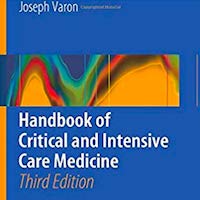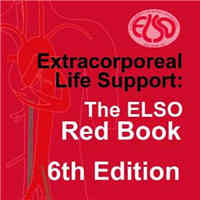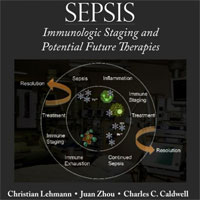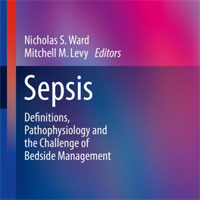Tag: study
Dexmedetomidine for Sedation in Pediatric ICU
Audit shows compliance to the standards were not met. A third of the patients required higher doses of up to 2 micrograms/kg/hour of dexmedetomidine. Studies have supported the safety of higher doses of up to 2 micrograms/kg/hour.2... read more
ICU-acquired Weakness: Critical Illness Myopathy and Polyneuropathy
Critical illness myopathy (CIM) and critical illness polyneuropathy (CIP) are significant complications in intensive care unit (ICU) patients, first identified in the late 20th century. These conditions often present... read more
Weaning Failure From Mechanical Ventilation
Ultrasound is a useful tool for identifying weaning failure from cardiovascular, diaphragmatic, respiratory, and airway origin. The strengths of our scoping review lie in its comprehensive approach to synthesizing diverse... read more
Peripheral and Respiratory Muscle Weakness and Functional Impairments in ICU Patients
This study demonstrated that patients discharged from ICU in this resource-constrained setting presented with peripheral and respiratory muscle weakness at unit discharge. Muscle weakness occurred despite a short ICU... read more
Cytomegalovirus Infection Adverse Impact on ICU Outcomes in COVID-19 Patients
In critically ill patients with SARS-CoV-2 pneumonia, cytomegalovirus (CMV) infection was frequently observed, and associated with increased ICU and hospital mortality. CMV co-infection correlated with a higher incidence... read more
NIV Effectiveness in Critical Patients with ARF and Do Not Intubate Order
The prevalence of do-not-intubate (DNI) order was frequent in patients with acute respiratory failure (ARF) admitted to the ICU, being related to age, comorbidity, frailty and the underlying disease. non-invasive ventilation... read more
Nebulized Furosemide Effect on the Mortality of Mechanically Ventilated ARDS Adult Patients
This RCT tackles an important topic in critical care medicine, which involves a large number of critically ill patients and continues to harbor high mortality despite improvements in management. The results of the study... read more
Prophylactic NIV Effects on Weaning
The use of prophylactic non-invasive ventilation (NIV) reduced reintubation rates, ICU and hospital length of stay (LOS), and mortality. These findings support the recommendation for its use in daily practice. Rescue... read more
The Association Between Pain, Analgesia, and Delirium in Critically Ill Adults
We observed an association between pain and incident delirium among critically ill adults. Exposure to morphine or fentanyl (but no other pain medications) was associated with increased risk of delirium occurrence. From... read more
Using AI to Detect and Treat Delirium
The prevention of delirium in ICU represents a major unmet need because of its high prevalence, under-diagnosis, and independent association with adverse outcomes including higher mortality and accelerated cognitive decline.... read more
Bundle of Care Effectiveness on Tolerance of Awake-prone Positioning in ARF Patients
In the evaluated population of patients with COVID-19-related ARF, implementing a bundle-of-care strategy was associated with a longer AW-PP exposure and a reduced risk of endotracheal intubation. In this secondary analysis... read more
Major Cardiovascular Surgery-induced Metabolic Reprogramming Role in AKI
Major cardiovascular surgery, particularly with cardiopulmonary bypass (CPB), induces significant changes in protein metabolism. Patients developing postoperative acute kidney injury (AKI) exhibited specific metabolic signatures.... read more
Ventilation Practices in ABI Patients and Association with Outcomes
Current mechanical ventilation practices for patients with acute brain injury (ABI) are poorly defined. This study aimed to describe ventilator settings/parameters used in intensive care units (ICUs) and evaluate their association... read more
Standard vs. Double Dosing of Beta-lactam Antibiotics in Critically Ill Sepsis Patients
The BULLSEYE trial is a randomized controlled study designed to enhance the treatment of critically ill patients with septic shock. The concept of administering higher and double doses of beta-lactams in such patients... read more
PCR and Biomarker Algorithms to Guide Antibiotics in Lower Respiratory Tract Infections
Acute chest syndrome (ACS) in sickle cell disease (SCD) is life-threatening and characterised by a new infiltrate on imaging plus fever or respiratory symptoms.1 Causes of ACS include infections, venous or fat embolisms or... read more
Blood Glucose and Clinical Outcomes After ECC
Postoperative blood glucose levels significantly impact outcomes in cardiac surgery patients undergoing extracorporeal circulation (ECC) auxiliary to open heart surgery. The study's primary outcome was the 90-day mortality,... read more
Helmet CPAP as NIV for COVID-19 Patients
The COVID-19 pandemic has challenged healthcare systems globally, highlighting the need for effective respiratory support strategies. Helmet continuous positive airway pressure (CPAP) has emerged as a potential noninvasive... read more
Tracheostomy in COVID-19 Patients
Tracheostomy is common in critically ill COVID-19 patients. In patients predicted to need a tracheostomy at some point, early, rather than late, tracheostomy might be a means to reduce the time spent in ICU. However,... read more
Pirfenidone to Prevent Fibrosis in ARDS
Pulmonary fibrosis is a major complication of the Acute Respiratory Distress Syndrome (ARDS). Pirfenidone is an approved treatment for idiopathic pulmonary fibrosis. It may attenuate ARDS-related fibrosis and decrease the... read more
Association Between Osteopontin and Apolipoprotein E gene Polymorphisms and Vancomycin-induced AKI
Individuals carrying specific genotypes of APOE (e2e3) were more prone to develop vancomycin-induced acute kidney injury (AKI), per se. This could apply to other nephrotoxic agents as well. We also observed a significant... read more
Severe COVID-19 Early Identification and the Need for ICU Care Based on Objective Risk Factors
The study found that several factors, including advanced age; male gender; and comorbid conditions like diabetes, chronic lung disease, and CVD had a strong association with ICU admission among COVID-19 patients. Similarly,... read more
Lactate Trajectory Models for Predicting AKI and Mortality in Hyperlactatemia Patients
The present study underscores the significant prognostic value of lactate trajectories in critically ill patients, particularly those with hyperlactatemia. Our findings suggest that rapid lactate clearance is strongly... read more









